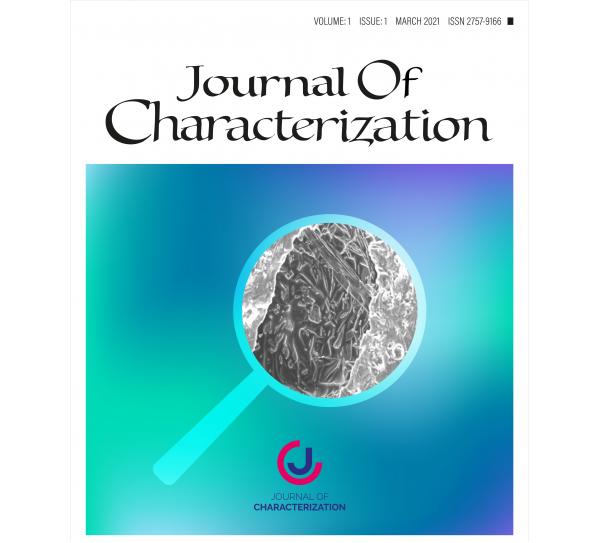Author :
Abstract
Susuz boraks tozlarının doğal hidrofilik yüzey özelliklerini tersine çevirmek için stearik asit (SA) ile ıslak kaplanması araştırılmıştır. Kaplama prosedürü, manyetik karıştırıcı üzerinde 750 rpm'de 60 dakika süreyle karıştırılan stearik asit çözeltisinin (ağırlıkça% 2 SA) susuz boraksın yüzey modifikasyonu için yeterli olduğunu ortaya çıkaran önceki bir çalışmanın sonuçlarına dayanmaktadır. Deneyler için, stearik asit tozları önce 80 ° C'de suda çözülmüştür. Bu çözeltiye susuz boraks tozlarının ilave edilmesiyle elde edilen karışım, yüzey modifikasyonunun başlatılması ve tamamlanması için manyetik bir karıştırıcı ile kuvvetli bir şekilde karıştırılmıştır. Daha sonra bu çözeltilerin her biri, çözünmemiş parçacıkları ayırmak için bir filtre kağıdı kullanılarak süzülmüş ve kağıt üzerindeki tortu, sabit tartım elde edilene kadar 48 saat boyunca 50 ° C'de kurutulmuştur. Islanabilirlik, ıslak kaplama işleminde başarı için anahtar bir parametre olarak kabul edilmiştir. Deneysel karakterizasyon tekniği ile elde edilen bu parametre, toz özelliklerinin değerlendirilmesi için kullanılmıştır. Susuz boraks tozlarının ıslatılabilirlik derecesi hem yüzeyleri stearik asit ile kaplandıktan sonra hem de sulu ortamda belirli bir süre su içerisinde bekletildikten sonra ölçülmüş ve karşılaştırılmıştır. Stearik asit kaplamasını tozu hidrofobikleştirmiş ve yıkama sonucunda da bu özellik yüksek oranda korunmuştur.
Keywords
Abstract
The wet coating of anhydrous borax powders with stearic acid (SA) to reverse their inherent hydrophilic surface properties was investigated. The coating procedure was based on the results from a previous study that revealed that the stearic acid solution (2 wt. % SA) mixed for 60 minute at 750 rpm on the magnetic stirrer was sufficient for the surface modification of anhydrous borax. For the experiments, stearic acid powders were first dissolved in water at 80 °C. The mixture obtained by adding anhydrous borax powders to this solution was vigorously mixed on a magnetic stirrer to initiation and completion the surface modification. Each of these solutions was then filtered using a filter paper to separate the undissolved particles, and the residue on paper was dried at 50 °C for 48 h until constant weighing was obtained. Wettability has been accepted as a key parameter for success in wet coating treatment. This parameter gained via the experimental characterization technique was used for an evaluation of the powder properties. The degree of wettability of anhydrous borax powders was measured and compared both after their surfaces were coated with stearic acid and after they were treated with water for a certain period of time in an aqueous environment. The stearic acid coating made the powder hydrophobic and this property was highly preserved after washing.
Keywords
- [1] P. C. McM5ll5an, “GLASS-CERAMICS - Second Ed5t5on,” 1979. [Onl5ne]. Ava5lable: https://b5bl5o.co.nz/book/glass-ceram5cs-second-ed5t5on-mcm5llanpw/d/300672203. [Accessed: 27-Mar-2021].
- [2] I. Özkan, “Ut5l5zat5on of B5gad5ç boron works waste clay 5n wall t5le product5on,” Acta Phys. Pol. A, vol. 132, no. 3, pp. 427–429, 2017, do5: 10.12693/APhysPolA.132.427.
- [3] M. Davraz, S. Kılınçarslan, and E. Pehl5vanoglu, “The effects of accelerat5ng adm5xture on the mechan5cal propert5es of bor5c ac5d added Mortars,” Acta Phys. Pol. A, vol. 125, no. 2, pp. 263–267, 2014, do5: 10.12693/APhysPolA.125.263.
- [4] M. Davraz, H. E. Pehl5vanoǧlu, S. K5l5nçarslan, and I. Akkurt, “Determ5nat5on of rad5at5on sh5eld5ng of concrete produced from Portland cement w5th boron add5t5ves,” Acta Phys. Pol. A, vol. 132, no. 3, pp. 702–704, 2017, do5: 10.12693/APhysPolA.132.702.
- [5] F. C. Hawthorne, P. C. Burns, and J. D. Gr5ce, Boron: M2neralogy, Petrology, and Geochem2stry. 1996.
- [6] C. Helvacı, “Borates : Encycloped5a of Geology , 2nd Ed5t5on,” Elsev2er, vol. 3. pp. 510–522, 2005, do5: 10.1016/B978-0-12-409548-9.12049-4.
- [7] K. Othmer, Encycloped2a of Chem2cal Technology, Volume 4. 2001.
- [8] ECOTOC, “Techn5cal Report No.63, Reproduct5ve and general tox5cology of some 5norgan5c borates and r5sks assessment for human be5ngs,” Brussels, Belg5um, 1995.
- [9] J. Kaplan and J. Zamek, “A subst5tute for Gerstley borate: Jonath,” Ceram. Tech., vol. 32, pp. 24–29, 2011.
- [10] Y. Ouabbas et al., “Surface mod5f5cat5on of s5l5ca part5cles by dry coat5ng: Character5zat5on and powder age5ng,” Powder Technol., vol. 190, no. 1–2, pp. 200– 209, 2009, do5: 10.1016/j.powtec.2008.04.092.
- [11] Y. Ouabbas, J. Dodds, L. Galet, A. Chamayou, and M. Baron, “Part5cle-part5cle coat5ng 5n a cyclom5x 5mpact m5xer,” Powder Technol., vol. 189, no. 2, pp. 245– 252, 2009, do5: 10.1016/j.powtec.2008.04.031.
- [12] S. Otles, “Mod5f5cat5on of surface propert5es of b5opowders by dry part5cle coat5ng,” Dec. 2008.
- [13] R. Pfeffer, R. N. Dave, D. We5, and M. Ramlakhan, “Synthes5s of eng5neered part5culates w5th ta5lored propert5es us5ng dry part5cle coat5ng,” Powder Technol., vol. 117, no. 1–2, pp. 40–67, 2001, do5: 10.1016/S0032-5910(01)00314-X.
- [14] G. Lefebvre, L. Galet, and A. Chamayou, “Dry coat5ng of talc part5cles w5th fumed s5l5ca: Influence of the s5l5ca concentrat5on on the wettab5l5ty and d5spers5b5l5ty of the compos5te part5cles,” Powder Technol., vol. 208, no. 2, pp. 372–377, 2011, do5: 10.1016/j.powtec.2010.08.031.
- [15] M. P. Gomez Tena, A. Moreno, E. Bou, and S. Cook, “Use of a new borate raw mater5al for glaze formulat5on,” Bol. la Soc. Esp. Ceram. y V2dr., vol. 49, no. 4, pp. 319–326, 2010.
- [16] S. Akp5nar, Z. O. Yaz5c5, and M. F. Can, “Invest5gat5on of surface-mod5f5ed anhydrous borax ut5l5sat5on 5n raw glazes,” Ceram. Int., vol. 44, no. 15, pp. 18344– 18351, 2018, do5: 10.1016/j.ceram5nt.2018.07.050.
- [17] S. Akpınar, “Character5zat5on of surface propert5es of dry-coated anhydrous borax powders,” J. Boron, vol. 5, no. 3, pp. 131–143, 2020, do5: 10.30728/boron.675261.
- [18] W. W. Focke, D. Molefe, F. J. W. Labuschagne, and S. Ramjee, “The 5nfluence of stear5c ac5d coat5ng on the propert5es of magnes5um hydrox5de, hydromagnes5te, and hydrotalc5te powders,” J. Mater. Sc2., vol. 44, no. 22, pp. 6100–6109, 2009, do5: 10.1007/s10853-009-3844-6.
- [19] Y. Q. Q5ng, C. N. Yang, Y. Z. Sun, Y. S. Zheng, Y. Shang, and C. S. L5u, “S5mple method for prepar5ng ZnO superhydrophob5c surfaces w5th m5cro/nano roughness,” J. Adhes. Sc2. Technol., vol. 29, no. 20, pp. 2153–2159, 2015, do5: 10.1080/01694243.2015.1054177.





